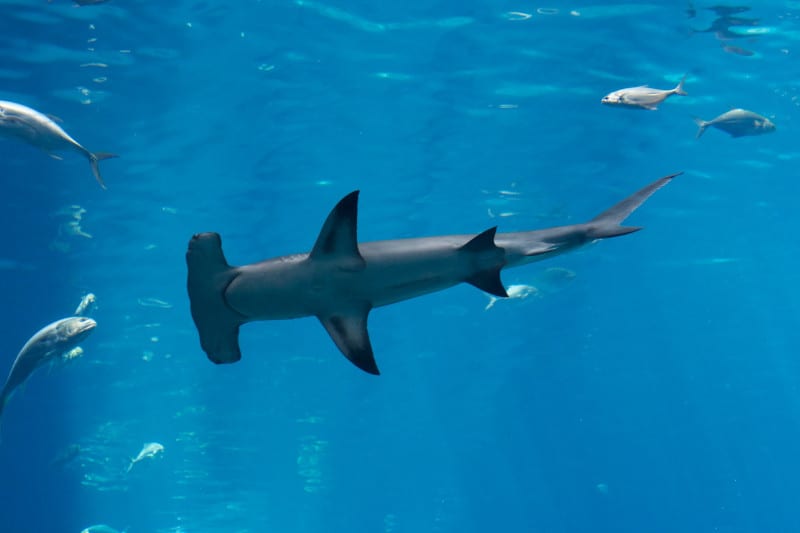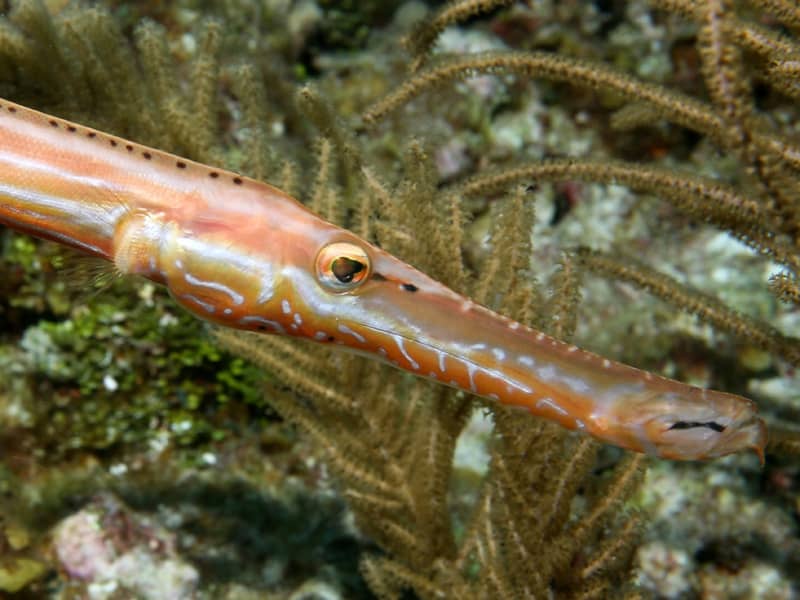
Great Hammerhead Shark Facts
- Firstly, the magnificent Great Hammerhead Shark truly lives up to the common name. That holds true because the amazing animal ranks as the largest of all the known hammerhead species.
- Despite its great size, as well as the reputation of most sharks, the powerful creature remains relatively harmless. Its rare attacks on humans usually occur due to provocation.
- However, it often displays a strong curiosity towards any divers that it encounters. Therefore, it should be treated with the respect due to any powerful creature in its own environment.
- Quite sadly, the animal is heavily hunted, and merely for its fins. Due to this, its numbers have declined significantly.
- Therefore, the IUCN has understandably listed the creature as Endangered. Yet, unfortunately, no large-scale conservation efforts exist at this time.
Related Articles




Great Hammerhead Shark Physical Description
Firstly, the amazing Great Hammerhead Shark has an extremely streamlined body shape. This aids its motion through the ocean waters in search of prey.
A mature adult also averages about 11 ft (3.5 m) in length. In addition, the weight averages roughly 510 lb (230 kg). However, exceptional individuals sometimes reach a length of 20 ft (6.1 m).
The color pattern also remains quite distinctive. Typically, individuals display either a light gray, dark brown, or olive on the upper side. Yet the bottom usually presents a white color.
Finally, the hammer, or cephalofoil, is truly impressive. Of further interest is the nature of its width. This remarkable feature always equals between 23 – 27% of the body length.
- Kingdom: Animalia
- Phylum: Chordata
- Class: Chondrichthyes
- Order: Carcharhiniformes
- Family: Sphyrnidae
- Genus: Sphyrna
- Species: S. mokarran

Great Hammerhead Shark Distribution, Habitat, and Ecology
Most notably, the fascinating Great Hammerhead Shark has a wide distribution range. It inhabits all tropical waters, and many temperate ones, around the world.
However, its particular habitat remains truly specific. It primarily inhabits coral reefs, continental shelves, and lagoons. The animal also prefers a depth ranging from 3.3 ft (1 m) to 260 ft (80 m).
This magnificent creature also most commonly has a migratory lifestyle. However, most individuals merely move from one part of their region to another, with the seasons.
Further, this species evolved as a primarily solitary predator. Individuals have a widely varied diet, however. Common prey includes crabs, squids, and numerous fish. It also occasionally displays cannibalistic behavior.
Species Sharing Its Range

Atlantic Trumpetfish


Check out our other articles on Breathtaking Asian Species, Rose of Jericho, Common European Viper, Prohodna Cave, Luna Moth, Giant Wood Moth, Indian Bullfrog, Maned Wolf









our planet one earth where we live so let’s conserve it i am a retired biologist from Boston I live in Florida i worked in a zoological society for 22 years i am 47 years old even though I look like I’m 19 or even 20. i snorkeled with baby great hammerhead sharks at Disney world it was a lot of fun. i love to explore the planet. and the wildlife that lives in it. from their different adaptations to survive. of course their are endangered species that desperately need our care. like African elephants and white and black rhinos sadly the west African black rhino is extinct that makes me cry. i will subscribe to emails for the newsletter. there are only about a few rhinos left in Africa like i mentioned also the 3 species in Asia. here in the United states of America. there are the Florida grasshopper bird a songbird or perching bird that belongs to the bird order the passirines. and the one and only national symbol of America the bald eagle. my favorite north American animal. they are powerful in flight. and use their binocular vision to snag its prey which are fish. i will look forward to hearing from you the website.🦅